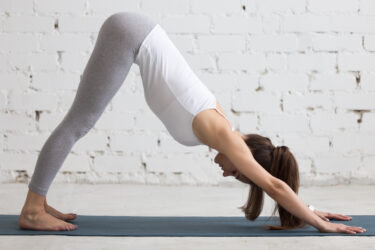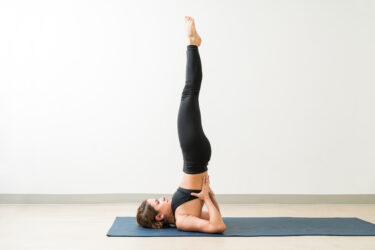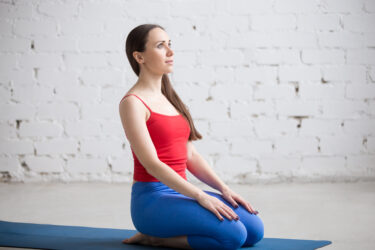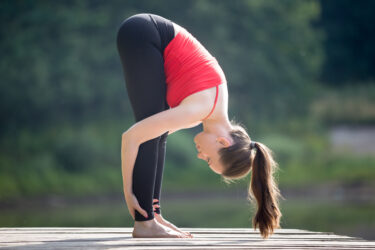Yoga Asanas for Hair Growth: A Comprehensive Research-Based Guide
By Dr. Aastha Manchanda +2 more

Get more insightful and
helpful tips to
treat Diabetes for FREE



Download PharmEasy App




Register to Avail the Offer
Send OTPBy continuing, you agree with our Privacy Policy and Terms and Conditions
By Dr. Aastha Manchanda +2 more
Table of Contents
The world is now acknowledging the importance of hair health, and people are actively seeking ways to ensure that they have strong and shiny locks. Yoga, an ancient discipline with numerous potential physical and mental health benefits, has lately gained popularity as a means to promote hair growth and reduce hair loss. In this article, we will explore the science behind yoga’s proposed role in promoting hair health and delve into specific yoga asanas that may aid in hair growth.
In this section, we will try to explain the hair growth cycle and the factors that influence it.

Your hair doesn’t grow all at once. It goes through three key phases which are thenagen, catagen, and telogen phase.
Anagen phase is the “growth” phase spans 2 to 6 years. In this time, hair grows half an inch per month.
Next comes the catagen phase. For 2 to 3 weeks, hair growth slows down. The hair follicles become smaller and disconnect from the blood supply.
Finally, we have the telogen or “resting” phase. Hair follicles take a 3-month break. You might lose 50 to 100 hairs every day during this stage. This is normal and one need not worry regarding this loss.
Several factors affect hair growth which are listed below.
Genes play a big role in our hair health. They decide the thickness, colour of our hair, and even how fast it grows. They also make us prone to certain hair conditions.
Hormones affect our hair growth too. Health issues like PCOS, thyroid problems, and hormonal changes during pregnancy or menopause can lead to hair loss.
A lack of vitamins, minerals, and proteins in our diet can weaken our hair and stunt its growth. For healthy hair, we need a balanced diet.
Stress is bad for our hair. High levels of stress can mess up our hair growth cycle. This results in hair loss or thinning.
Too much styling or rough handling can also damage hair, leading to breakage and hair loss.
Did you know?
Here we have the possible ways in which yoga may promote hair health.
Some yoga poses increase blood flow, especially to the scalp. This ensures that hair follicles get vital nutrients and oxygen, boosting hair growth.
Yoga is said to reduce stress. By easing stress and anxiety, yoga may be able to lessen hair loss.
Doing yoga regularly may help balance body hormones and that’s essential for good growth of hair.
Yoga may also help detox our bodies. When toxins are flushed out, our overall health and scalp health improves, which in turn may aid hair growth.
In my experience, hair damage may arise from using hair dyes since they may weaken and thin your hair. According to an analysis published in 2021, permanent hair colours have the potential to eliminate the natural fatty acids found in hair. You’re advised to go for natural and non-permanent colouring options, other than yoga, to lessen the damage.
Dr. Siddharth Gupta, B.A.M.S, M.D
Ad* You May Also Explore: Pharmeasy Vitamin E Capsules
In this section, we will describe the specific yoga poses that may help hair growth.

The Kapalabhati Pranayama is said to cleanse and refresh the whole head. It is proposed to boost the oxygen supply, lowers free radicals, and fosters hair growth. It may also combat stress and anxiety which cause hair fall.
If you’re pregnant or have heart issues, high blood pressure, hernia, stomach ulcers, or any breathing issues, steer clear of Kapalabhati. Practice it when your stomach is empty under the watch of a qualified yoga instructor.

Doing adho mukha svanasana drives more blood to the scalp. This feeds hair follicles and thus may help hair growth. It is said to calm the mind and fend off stress, hence stopping hair loss due to stress.
If you’re battling carpal tunnel syndrome, high blood pressure, dislocated shoulder, retinal detachment, weak eye capillaries, or diarrhea, don’t try this pose.

Sarvangasana increases blood flow to your head, leading to hair growth and reduction in hair fall. It balances bodily hormone levels, supporting overall hair health.
Your doctor will let you know if you can perform Sarvangasana, especially if you have a slipped disc, heart problems, or high BP. Practice this under a yoga instructor’s guidance or better to avoid.

Balasana is said to fight two major causes of hair fall one is stress and the other is problems with digestion. Regular use of this pose may boost mental health, hair health, and digestive health.
If you have diarrhea, a bad knee, severe back or neck pain, high blood pressure, vertigo, or a herniated disc, don’t practice Balasana.

Sirsasana improves blood flow to the scalp and thus may help to reduce hair fall, scant hair, and untimely white hair. The pose stimulates hair follicles, elevating hair growth.
Sirsasana needs some skill and balance. Start under an experienced yoga teacher, and use a wall for support. No need to practice this pose if you’ve got high blood pressure, injuries in your neck or spine, or any eye problems.

Vajrasana is said to help digestion and bring down digestive issues enabling hair growth. It may help the body to take in nutrients better, promoting healthy hair growth.
If you’ve got severe joint problems or sitting this way pains you, avoid Vajrasana. Use a cushion or blanket under your knees and ankles for support if needed.

Uttanasana is said to stretch and relax muscles and increase oxygen and blood flow to the head. This pose may aid hair growth by feeding hair follicles and strengthening hair strands.
Don’t do Uttanasana if you have injuries in your lower back or pain in your leg joints.

Matsyasana may aid hair growth by stepping up blood circulation, easing stress, and promoting overall well-being. Regular use of this pose may tackle most hair problems, nourishing the scalp and making hair healthy.
While bending, be sure not to strain your back as it may cause injuries. Always do Matsyasana at your comfort level and be mindful.
To my knowledge, regular hair trimming may encourage the growth of strong, healthy hair. Removing split ends stops hair breakage by preventing them from moving up your strands. However, regular haircuts won’t accelerate the growth of your hair. Hair grows approximately 0.5 inches every month, regardless of how frequently you trim it.
Dr. Rajeev Singh, BAMS
Also Read: Natural Home Remedies For Grey Hair
Eating a balanced diet helps hair growth. Make sure you’re getting enough proteins, vitamins, and minerals in your food.
Protein is hair’s best friend. It’s a key building block for hair follicles. Add protein-rich foods like eggs, lean meats, fish, and legumes to your diet.
Include fruits, vegetables, and whole grains in your meals. This way, you get a good mix of vitamins and minerals, such as vitamin A, vitamin C, iron, zinc, and biotin, that nourish your hair.
Making sure blood flow to the scalp is good is key for hair growth. Boost it by massaging your scalp often. Use mild, nature-friendly hair products that take care of your scalp and hair.
Giving your scalp a nice rub with your fingertips for a few minutes every day speeds up blood flow and helps hair growth.
Choose hair care products that clean yet moisturize your hair and scalp just right without taking away natural oils. This helps create a healthy scalp environment perfect for hair growth.
Keep stress in check. Use calming techniques like meditation, yoga, and deep breathing exercises. Always getting enough sleep also eases stress levels and boosts hair health.
Yoga may work wonders for your hair’s health and growth if you include it in your daily routine. Yoga’s healthy balance of body and mind leads to possible hair growth.
Remember, along with these targeted yoga poses for hair growth, a nutrient-rich diet, good scalp care, and effective stress management are equally vital.
Also Read: How To Increase Melanin In Hair: A Research-Based Guide To Restoring Color Naturally
Yes, certain yoga poses may tackle hair loss by increasing blood flow to the scalp, feeding hair follicles, balancing hormone levels, and coping with stress.
Of all, Adho Mukha Svanasana or the Downward-Facing Dog Pose is said to be most effective for hair health. It drives blood to the scalp and helps fight stress and this fosters hair growth.
Yes, it’s believed that when you rub your nails (also known as Balayam Yoga), you stimulate nerve endings in the nails. These nerves are supposed to connect to hair follicles. So, nail rubbing might stimulate blood flow to your scalp and help hair growth. This is what is believed in yoga. Research is yet to corroborate this. But there is no harm in trying it out.
Yes, yoga may tackle thinning hair by increasing blood flow, feeding hair follicles, balancing hormones, and combating stress. All factors that lead to hair loss. Regular practice of yoga poses for hair growth may make your hair thicker and healthier.
Disclaimer: The information provided here is for educational/awareness purposes only and is not intended to be a substitute for medical treatment by a healthcare professional and should not be relied upon to diagnose or treat any medical condition. The reader should consult a registered medical practitioner to determine the appropriateness of the information and before consuming any medication. PharmEasy does not provide any guarantee or warranty (express or implied) regarding the accuracy, adequacy, completeness, legality, reliability or usefulness of the information; and disclaims any liability arising thereof.
Links and product recommendations in the information provided here are advertisements of third-party products available on the website. PharmEasy does not make any representation on the accuracy or suitability of such products/services. Advertisements do not influence the editorial decisions or content. The information in this blog is subject to change without notice. The authors and administrators reserve the right to modify, add, or remove content without notification. It is your responsibility to review this disclaimer regularly for any changes.
Comments